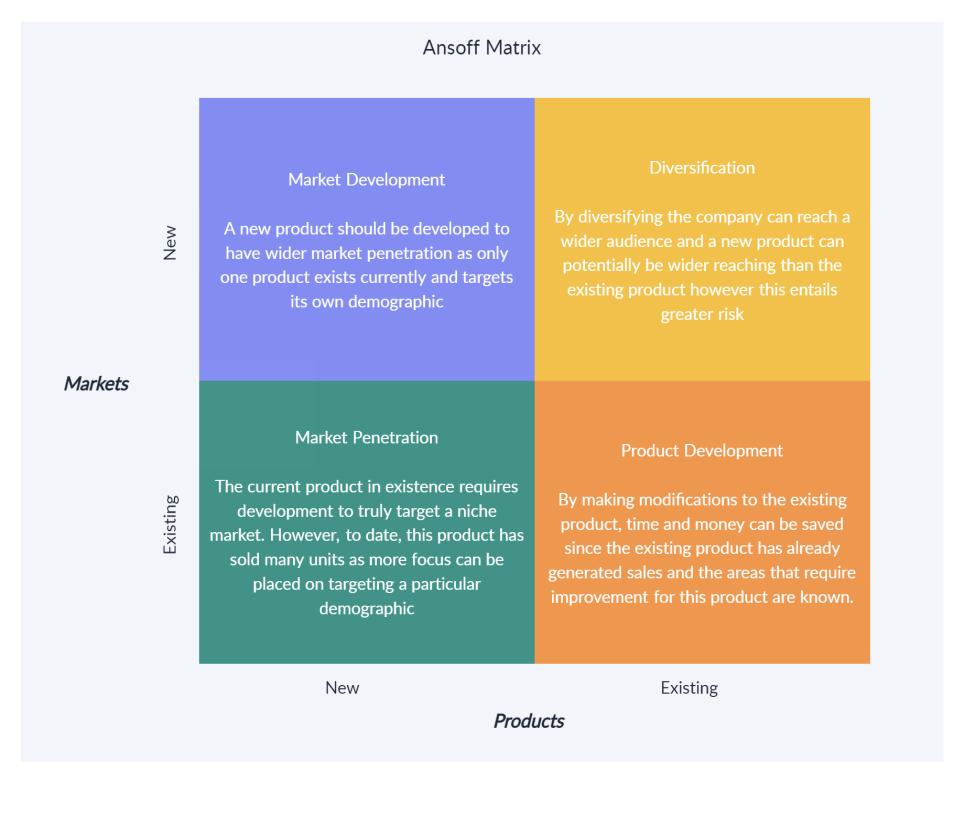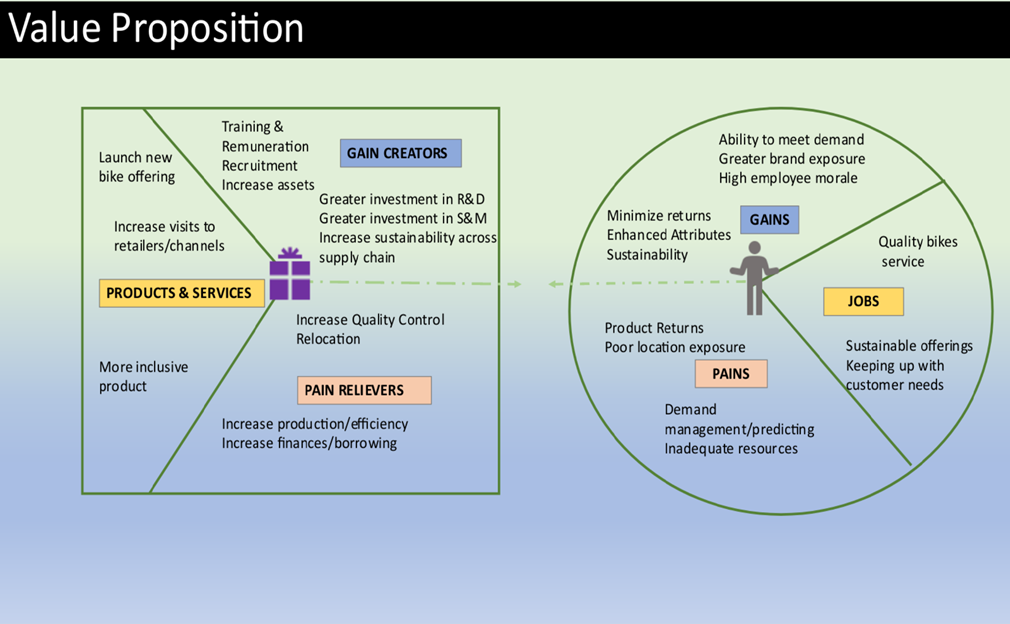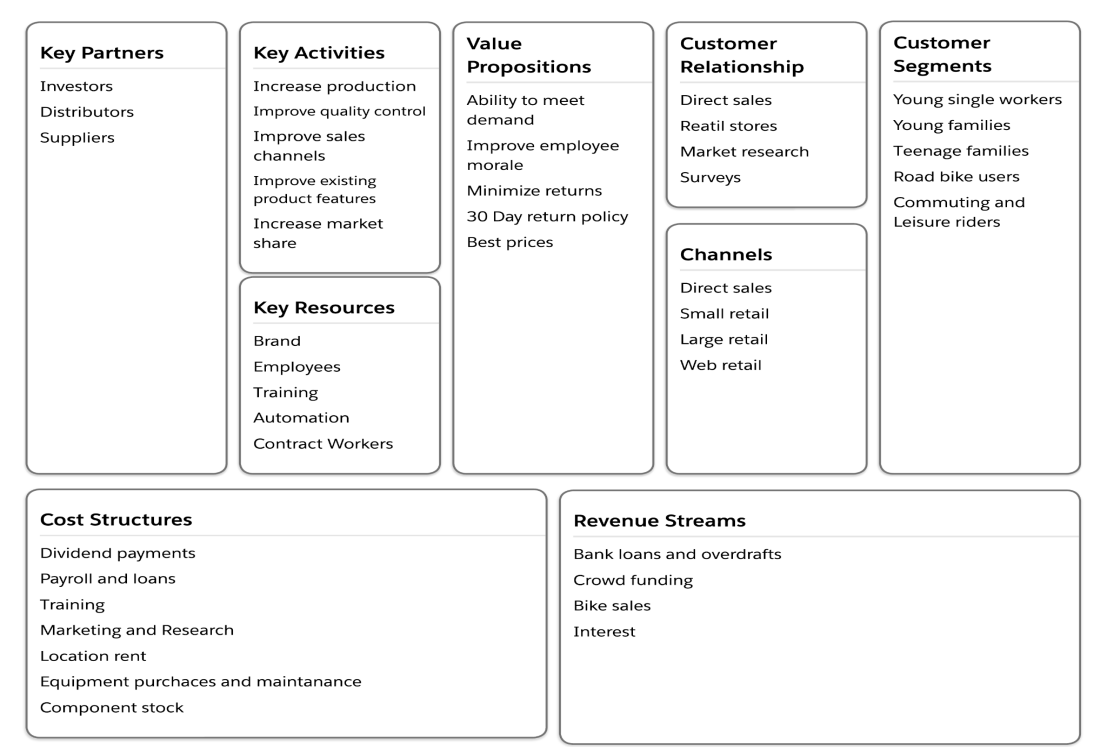Introduction
Strategic planning refers to a process conducted by a firm to define its strategy and reach decisions on sharing resources to achieve strategic goals. The procedure became popular among businesses during the 1960s and is still an essential element of strategic management (Varadarajan, 2020, p. 89). It is executed by particular individuals who involve many parties and resource sources in the evaluation of the company and its association with other brands within its industry. The aim of this paper is to discuss the strategic planning of Green Wheels and the measures it has taken to evaluate and enforce competitive advantage.
Analysis/Application of Theories
Strategic Planning
Strategic planning is a procedure whereby a business’ leaders define their vision for the future as well as the identity of the company’s goals. It involves establishing the sequence in which the goals need to be reached to ensure that the firm can realize its vision (Varadarajan, 2020, p. 92). Having a strategic plan is important since it helps to track progress toward objectives (George, Walker, and Monster, 2019, p. 810). The image below in figure 1 shows a business model canvas that helps to elaborate the business strategy of Green Wheels.
Business Model Canvas and Strategy Cascade
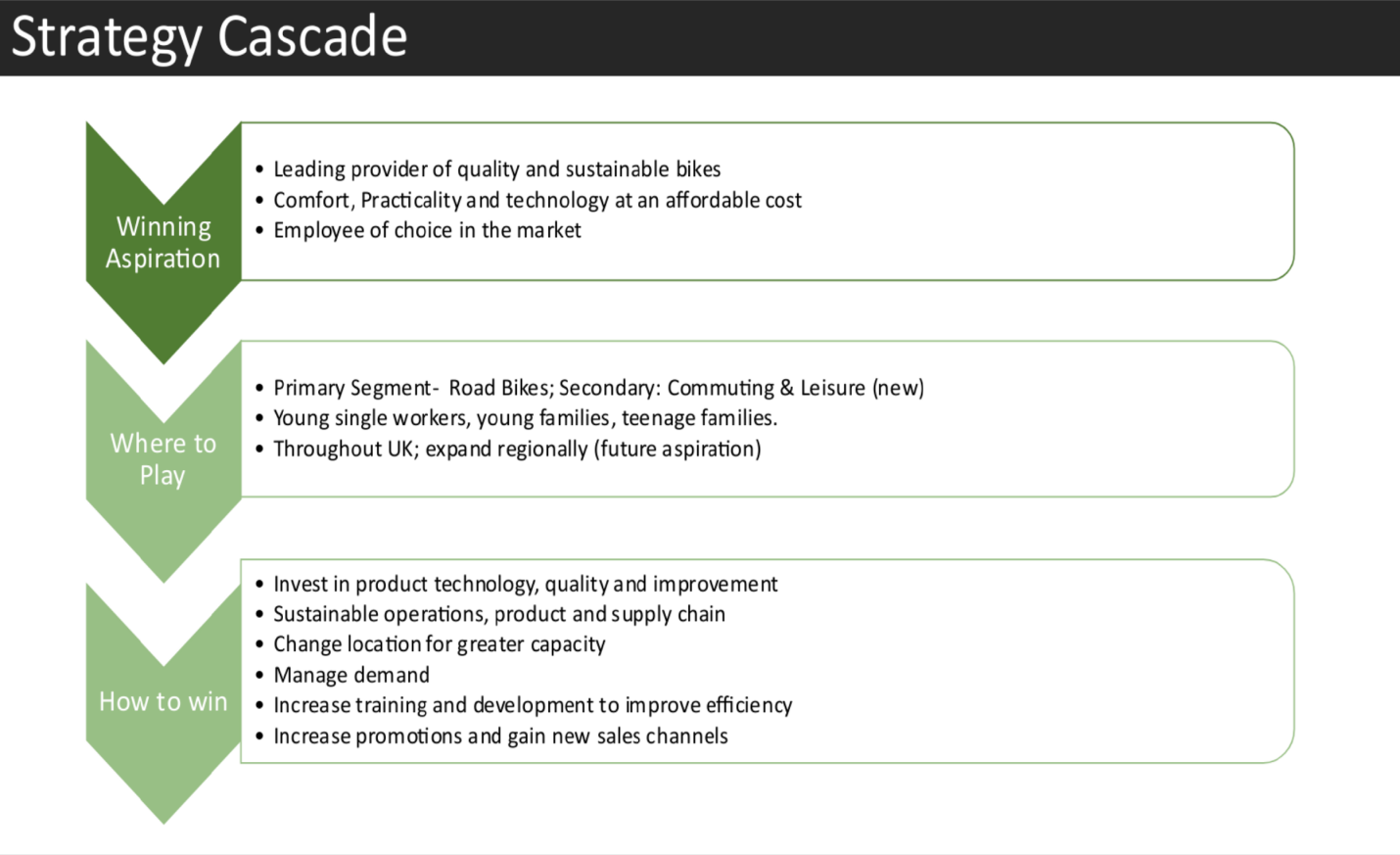
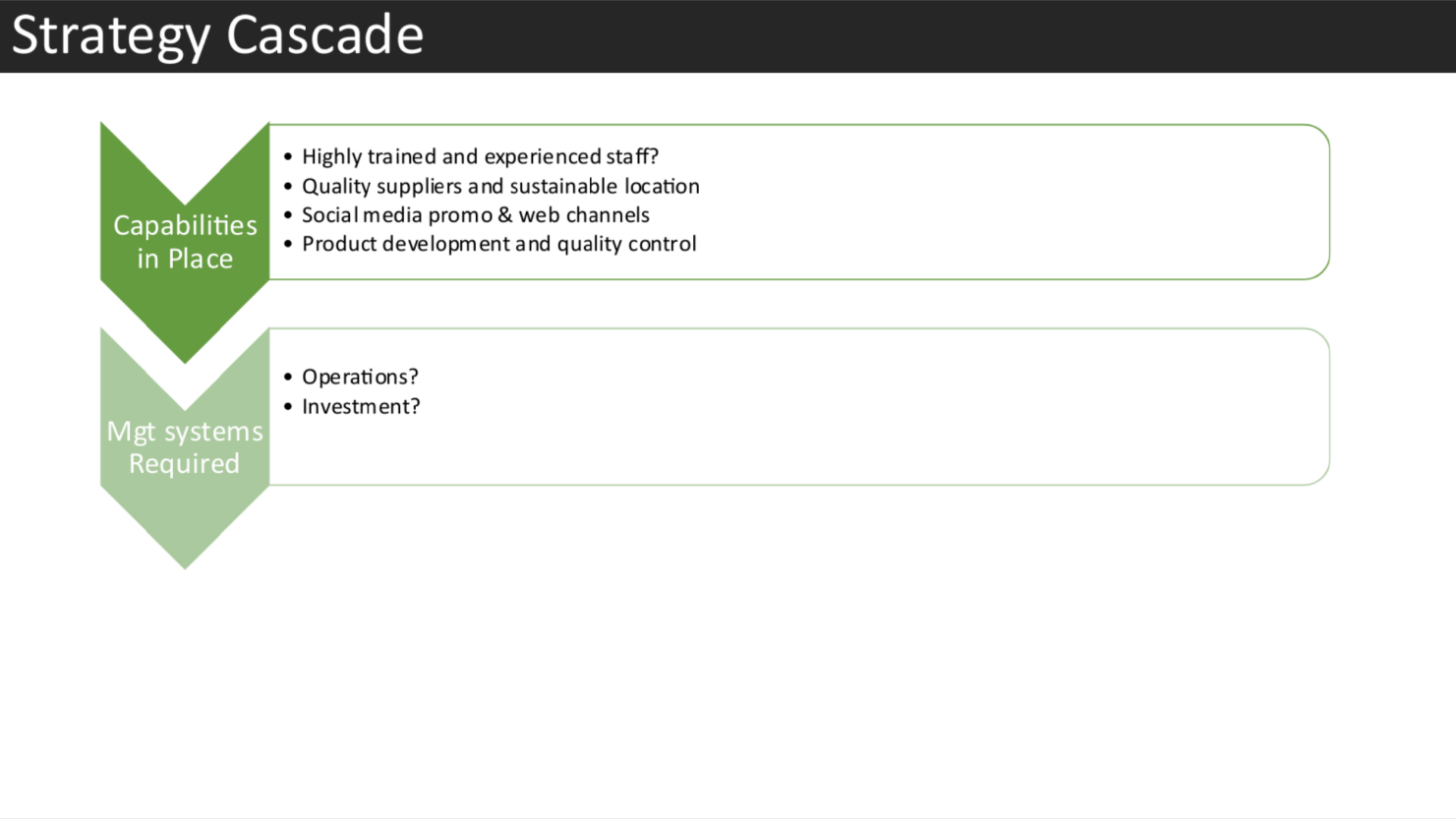
The business model canvas is a tool that has been used to visualize every building block in the Green Wheels business. It was used to help recognizes the main elements that comprise the company. For instance, key partners, activities, value propositions, cost structures, revenue streams, customer relationships, customer segments, and channels (Varadarajan, 2020, p. 92). The strategy cascade comprises the winning aspiration, where to play, how to win, capabilities in place, and the management systems required.
Where to Play
Green Wheels’ winning aspiration shows that it is the leading provider of quality as well as sustainable bicycles. Apart from that, the business’s primary segment is road bikes, while its secondary is commuting and leisure (Asadpourian, Rahimian, and Gholamrezai, 2020, p. 292). The targeted individuals are single workers and young and teenage families throughout the United Kingdom, although it has future aspirations of expanding regionally to ensure the growth of the firm and more market share.
How to Win
In order to achieve all its goals, the strategy cascade shows that it will invest in product technology, quality, and improvement. Additionally, it can change the location for greater capacity and manage the demand, among other measures. According to the Ansoff Matrix, the primary strategy is market penetration (Ozbekler and Ozturkoglu, 2020, p. 1504). The reason for choosing this approach is that the current product requires development to target a niche market (Asadpourian, Rahimian, and Gholamrezai, 2020, p. 292). The Bowman’s Strategy Clock was the basis of choice as it offers alternatives for positioning within a market based on perceived value as well as price. It is important to note that Bowman’s approach is usually utilized with Ansoff Matrix. Between year four and year 5, the company made some financial decisions. For instance, continued payment of overtime and enhanced training for employees.
Business Level Strategy and Functional Level
The organization decided to move to a business part since the business was growing and space at the current rural location was inadequate. A third and final loan was taken to ensure liquidity during this transition to a larger location (Asadpourian, Rahimian, and Gholamrezai, 2020, p. 293). Sustainability continues to be a top priority, and debtors are monitored quarterly while alternating between a firm and gentle approach depending on if the sales channel has money past due for the organization. Results were according to plan until the end of year 5, Quarter 2, when the group decided to change its style of operation and remove product discounts which ultimately made the business run out of cash.
Link to Mission Statement
The firm uses the e-commerce channel to sell to outside the immediate geographic region. There are two areas that the business has excelled which are brand and reputation and human resource management (Nosratabadi et al., 2019, p. 1663). According to the VRIO analysis, the firm performs well in the criteria. This can be linked to the mission statement and its significance, where employees perceive that they contribute something toward the larger goal by performing their roles.
VRIO Framework Analysis
The VRIO framework refers to an internal analysis that aids businesses in identifying the positives and resources that offer them a competitive advantage see figure 2. It targets four areas, including value, rarity, imitability as well as organization (Lorenzo, Rubio, and Garcés, 2018, p. 95). For instance, the company is rich in cash which is valuable and inimitable but fails in the rare category. This offers them the ability to service debts and initiate growth, thus contributing to the competitive edge over other firms (Lorenzo, Rubio, and Garcés, 2018, p. 99). The same happens with e-commerce, as seen in figure 2. It provides resources that add value to the life of their customers (Echchakoui, 2018, p. 139). Additionally, it has organized management systems, and the product cannot be easily imitated. However, it does not have any control over scarce resources. Externally, this gives the competition an edge in the marketplace.
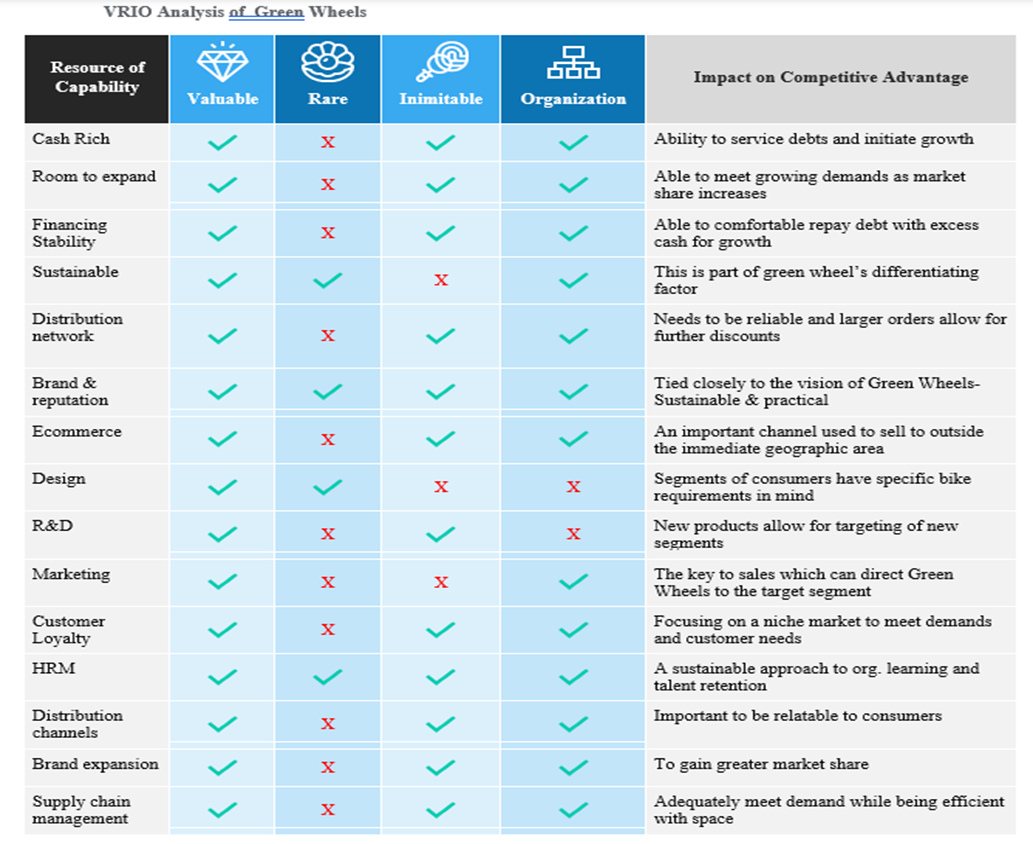
TOWS Analysis
TOWS analysis is a SWOT analysis tool extension that allows a company’s management to think about the strategies around internal and external areas. It is an essential resource that needs to be used at any business level (Abdel-Basset, Mohamed, and Smarandache, 2018, p. 116). Here, there are strategies that utilize strengths and others to minimize weaknesses. For example, to maximize opportunities, the company is planning to invest in human resources and training to enhance quality ratings (Asadpourian, Rahimian, and Gholamrezai, 2020, p. 295). Secondly, it is targeting to market product features in more sales channels to ensure the firm gains a larger market share. Thirdly, Green Wheels aims to increase demand by being agile in forecasting the market as well as producing efficiently (Pirnar, Kurtural, and Eriş, 2019, p. 235). Lastly, by leveraging product features via promotions and discounts, they plan to increase sales orders.
The company has developed strategies that will enable it to minimize or reduce the impact of its weaknesses by capitalizing on opportunities. For instance, by enhancing the quality, the management understands that it will align directly with a sustainable approach (Asadpourian, Rahimian, and Gholamrezai, 2020, p. 297). Secondly, the management plans to realign from its conscious pricing approach to a hybrid strategy that aligns with sustainability. The business plans to expand into sub-segments, including leisure and touring, to boost revenue and minimize economies of scale. Additionally, it aims to create a better supplier agreement to lower the cost, change location to enhance efficiency, and reduce reliance on contractors to raise the morale of employees.
Business Performance
Year 4 Quarter 1
From the first quarter in year 4 to the last quarter in year 5, the company’s sustainability score has not dropped even once, as seen in figure 3. This shows that the company is heading in the right direction. One challenge associated with business performance is that the company has not identified ways to control scarce resources in the industry. In this quarter, the company applied the theory of demand management, where it focused on predicting the demand for road bikes. One of the decisions made after the last quarter in year 3 was recruitment quality change in research and development from average to above average (Ozbekler and Ozturkoglu, 2020, p. 1514). Secondly, the training method for the department was changed from e-learning to on job training. Thirdly, the training policy changed from maintaining skills to rapid improvement.
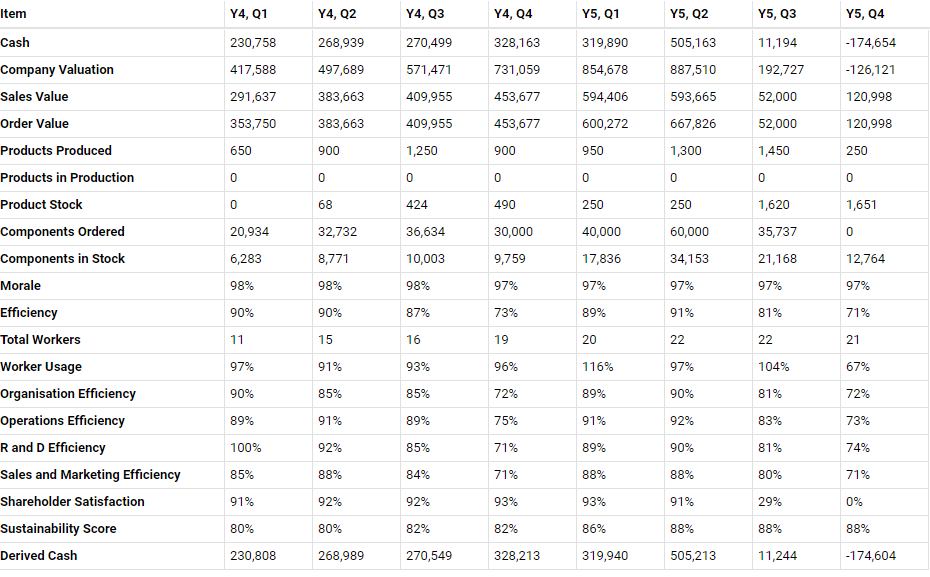
For example:
- Product Technology: Practicality, 70 hours completed, new progress: 30%
- Product Technology: Speed, 75 hours completed, new progress: 69%
- Product Technology: Off-Road, 125 hours completed, new progress: 55%
- Product Technology: Comfort, 150 hours completed, new progress: 35%
- Product Technology: Weight, 140 hours completed, new progress: 58%

In terms of finance, the results were not expected, and this could have been caused by location changes to the business park, which helps with exposure and image (figure 4). The Triple Framework theory dictates that it is not enough to deliver any lasting competitive advantage. Rather, what matters more includes alignment, adaptability, and agility, which can be seen in the company’s performance (Ozbekler and Ozturkoglu, 2020, p. 1516). The same happened in the first two-quarters of year 5.
Year 5 Quarter 1
Some of the decisions made in Y5, especially in the first quarter, include: 2 new units of equipment purchased by the Research & Development department, 1 new worker employed by Research & Development, and 0.5 new contractors employed by Research & Development. The actual results for this quarter consist of the following:
- Product Technology: Speed, 50 hours completed, new progress: 5%
- Product Technology: Off-Road, 50 hours completed, new progress: 10%
- Product Technology: Practicality, 622 hours completed, new progress: 31%
- Product Technology: Comfort, 567 hours completed, new progress: 28%
- Product Technology: Weight, 949 hours completed, new progress: 100%
- You have completed research in Weight which takes the company to level 3 and gives a 60% boost
- Product Technology: Weight, 0 hours completed, new progress: 0%
The figures below, figure 5 and 6, can be used to show a comparison between Year 4 Quarter 1 and Year 5 Quarter 1.
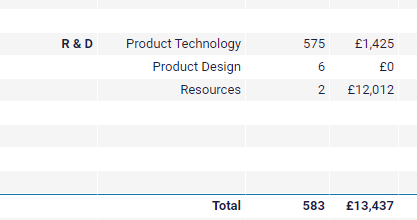
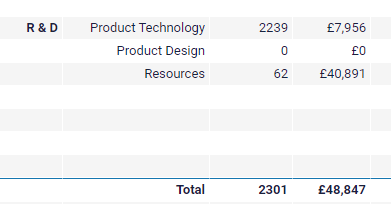
After the first quarter, there are some decisions made. For instance: the training method for Research & Development changed from an external course to an on-the-job, and the training policy for Research & Development changed from rapid improvement to gradual improvement. Lastly, 0.3 new contractors were employed by Research & Development. The actual results witnessed include:
- Product Technology: Comfort, 1433 hours completed, new progress: 100% (figure 8)
- You have completed research in Comfort, which takes the company to level 4 and gives an 80% boost.
- Product Technology: Practicality, 1377 hours completed, new progress: 100%
- You have completed research in Practicality which takes the company to level 4 and gives an 80% boost
- Product Technology: Practicality, 1 hour completed, new progress: 0%
- Overtime for Research & Development changed from 25% to 30%
The figures below, figure 7 and 8, can be used to show a comparison between Year 4 Quarter 2 and Year 5 Quarter 2.
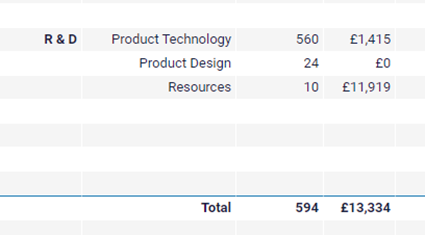

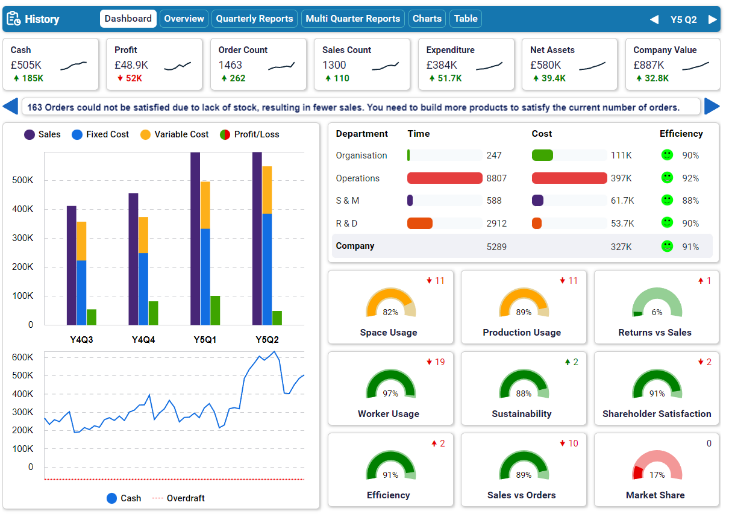
Year 5 Quarter 3
Some of the decisions made in year 5 quarter 3 include: 1 unit of equipment sold by Research & Development, 1 worker made redundant by the department, and contractors laid off by Research & Development. Lastly, overtime for Research & Development changed from 30% to 33% (figure 9). The actual results witnessed include:
- Product Technology: Weight, 1999 hours completed, new progress: 100%
- Completed research in Weight which takes the company to level 4 and gives an 80% boost
- Product Technology: Weight, 0 hours completed, new progress: 0%
The results were unexpected, and the main reason is that the sales promotion discounts dropped from 20 to 10% whilst Cameron decreased prices and increased market share. In response, the company targeted to increase promotions and reduce production to only 250 in the next quarter (Hodaei et al., 2020, p. 21). To compare Y4Q2 and Y5Q2, there are two figures below, figures 10 and 11.
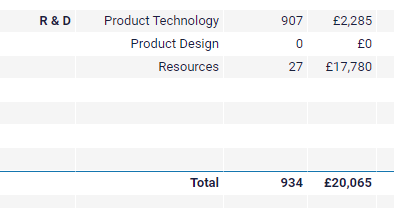
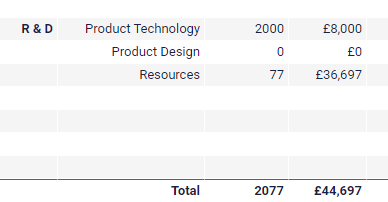
Year 5 Quarter 4
The decisions made in year 5 quarter 4 include: R&D, 1 new unit of equipment purchased by R&D, 0.5 new contractors employed by R&D, and overtime for Research & Development changed from 33% to 30%. The actual results witnessed include:
- Product Technology: Speed, 1900 hours completed, new progress: 100%
- You have completed research in Speed which takes the company to level 4 and gives an 80% boost
- Product Technology: Speed, 100 hours completed, new progress: 100%
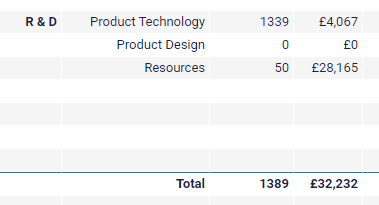
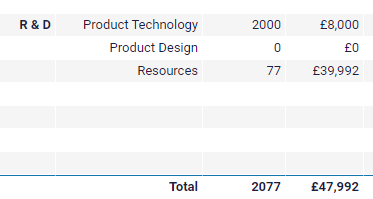
The results were expected as the company actualized the resolution reached after the third quarter (figure 12). The firm increased promotions and reduced to only 250 in the fourth quarter, an improvement from the last quarter (figure 13). After seeing the results, it was decided that a loan should be acquired to support the business’ sustainability strategy.
Explanation of Theory Linked to Cascade of Choices: Triple Framework Theory
As mentioned above, the triple framework theory dictates that it is not adequate to deliver any lasting competitive advantage. Rather, what determines the performance of a firm or that is important include alignment, adaptability, and agility, which can be seen from the company’s performance. The concept has been applied in different organizations in the past and had success (Weston and Nnadi, 2021, p. 12). It is important to consider applying models that have worked for the competition in order to remain relevant.
Business model
Green Wheels utilizes the business-to-consumer model whereby it sells directly to customers. Their model can as well be described as business-to-consumer e-commerce as they have sales from a section of their customers who buy through online means (Caputo et al., 2021, p. 489). The result of this is that it has earned the company the name retail e-commerce. It is centered around the notion that a consumer generally makes a quick buying decision, particularly where the price is low (Caputo et al., 2021, p. 490). By making the cost of road bikes inexpensive, the company desires to attract and provoke potential customers into purchasing fast. By employing the model, it needs to maintain track of customer patterns and buying habits to succeed.
Companies that utilize the B2C model value efficiency and, thus, reduce the amount of time spent on trying to understand the customers, which eventually leads to the association becoming transactional. However, it may not involve direct communication between businesses and customers (Ritter and Pedersen, 2020, p. 180. The marketing strategy is focused on selling the item and, most of the time, is on delivering great-quality products at the fastest rate possible.
Dissimilar to the reviews in business-to-business, in a B2C, they are hidden by an influx of positive and great-quality reviews. In the case of Green Wheels, this might not be hard since the product is of high quality (Dzulfikar et al., 2018, p. 224). One element that the company can introduce is pushing public relations outreach and giving deals for completed reviews to aid in increasing the amount of feedback (Xuhua et al., 2019, p. 80). A good tactic used by other established B2C organizations is collecting the responses from customers via store credit or personalized discount codes sent through remarketing or email marketing.
Porter’s Strategic Positioning
A company’s relative position within its sector determines if its profitability is above or below the industry average. The basis of above-average profit margins in the long term is a sustainable competitive edge (Islami, Mustafa, and Topuzovska Latkovikj, 2020, p. 7). There are two main types of competitive advantage a business can have, including differentiation or low cost. The two highlighted, combined with the scope of targeted activities of the firm, can lead to various generic strategies for attaining great performance in a sector.
Green Wheels has selected two segments, road bikes and commuting and leisure, and developed its approach to serving these two. In the focus strategy, there are two variants, as suggested earlier (Kamkankaew et al., 2022, p. 15). In cost focus, a company seeks a cost advantage in its target segment, whereas in differentiation focus, it aims for differentiation in a particular segment. Both rely on the differences between an organization’s segment and others in the marketplace. The targeted sections must have purchasers with uncommon needs, or the production or delivery systems ought to differ from those of other industry segments.
VRIO
The VRIO framework is an internal analysis that helps every department. It allows the company in discussion to service debts and initiates growth, thus contributing to the competitive edge over other firms (Hodaei et al., 2020, p. 23). The same happens with e-commerce, as seen in figure 1. It provides resources that add value to the life of their customers. Externally, this gives the competition an edge in the marketplace.
Ansoff Matrix and Bowman Strategy Clock
According to the Ansoff Matrix, the primary strategy is market penetration. The Bowman’s Strategy Clock offers alternatives for positioning within a market based on perceived value as well as price (Villagrasa, Sánchez, and Donaldson, 2021, p. 9571). In the departments of finance, marketing, and operation, Bowman’s strategic clock gives insights into which approach to avoid (Ali and Anwar, 2021, p. 42). For instance, risky high margins, which is the sixth position. Often, this tactic is adopted for temporary market supply disequilibrium.
Conclusion
The paper has discussed the strategic planning of Green Wheels and the measures it has taken to evaluate and enforce competitive advantage. Being competitive means that a company has factors that enable it to produce items or services at a higher quality and affordable price. Green Wheels has shown that it has the capability to add value to a product and sell it with reasonable pricing. For instance, road bikes are eco-friendly, and their quality is unique in the market. The result of this is that there is a creation of differentiation, which is essential in the market. The paper reveals that before creating a strategic plan, it is important to utilize certain tools, such as TOWS and VRIO, that can provide information on a firm’s strengths, weaknesses, threats, and opportunities.
Recommendation
The first recommendation is that companies should depend on customer feedback when developing new strategies. This can be done by giving feedback forms to all customers after purchase. Any company, regardless of size or industry, should be willing to learn and understand much about its products and customers as it will help to differentiate itself from other brands. The second recommendation is developing a digital marketing department that will enable the firm to have success in e-commerce. The team can allocate a budget in the new financial year to allow this to happen. The expected outcome is that the company will witness more online sales than in years before.
Reference List
Abdel-Basset, M., Mohamed, M. and Smarandache, F. (2018) An extension of neutrosophic AHP–SWOT analysis for strategic planning and decision-making. Symmetry, 10(4), p. 116. Web.
Ali, B.J. and Anwar, G. (2021) Porter’s generic competitive strategies and its influence on the competitive advantage. International Journal of Advanced Engineering, Management and Science, 7(6), p. 42-51. Web.
Asadpourian, Z., Rahimian, M. and Gholamrezai, S. (2020) SWOT-AHP-TOWS analysis for sustainable ecotourism development in the best area in Lorestan Province, Iran. Social Indicators Research, 152(1), p. 289-315. Web.
Caputo, A., Pizzi, S., Pellegrini, M.M. and Dabić, M. (2021) Digitalization and business models: Where are we going? A science map of the field. Journal of Business Research, 123, p. 489-501. Web.
Dzulfikar, M.F., Purwandari, B., Sensuse, D.I., Lusa, J.S., Solichah, I., Prima, P. and Wilarso, I. (2018) Personalization features on business-to-consumer e-commerce: Review and future directions. In 2018 4th International Conference on Information Management (ICIM) (p. 220-224). IEEE.
Echchakoui, S. (2018) An analytical model that links customer-perceived value and competitive strategies. Journal of Marketing Analytics, 6(4), p. 138-149. Web.
Fitriani, E. (2022) TOWS analysis on Recissbar to increase its competitiveness. Revista CEA, 8(16), p. 1876-1876. Web.
George, B., Walker, R.M. and Monster, J. (2019.) Does strategic planning improve organizational performance? A meta‐analysis. Public Administration Review, 79(6), p. 810-819. Web.
Hodaei, M., Alvani, S.M., Yazdani, H.R. and Zarei Matin, H. (2020) Coopetitive (Cooperation and Competition) advantage in public organizations: Synergy of people and process. Public Administration Perspaective, 11(2), p. 15-33. Web.
Islami, X., Mustafa, N. and Topuzovska Latkovikj, M. (2020) Linking Porter’s generic strategies to firm performance. Future Business Journal, 6(1), p. 1-15. Web.
Kamkankaew, P., Phattarowas, V., Khumwongpin, S., Limpiaongkhanan, P. and Sribenjachot, S. (2022) Increasing competitive environment dynamics and the need of hyper-competition for businesses. International Journal of Sociologies and Anthropologies Science Reviews (IJSASR), 2(5), p. 9-20. Web.
Lorenzo, J.R.F., Rubio, M.T.M. and Garcés, S.A. (2018) The competitive advantage in business, capabilities and strategy. What general performance factors are found in the Spanish wine industry?Wine Economics and Policy, 7(2), p. 94-108. Web.
Nosratabadi, S., Mosavi, A., Shamshirband, S., Zavadskas, E.K., Rakotonirainy, A. and Chau, K.W. (2019) Sustainable business models: A review. Sustainability, 11(6), p. 1663. Web.
Ozbekler, T.M. and Ozturkoglu, Y. (2020) Analysing the importance of sustainability‐oriented service quality in competition environment. Business Strategy and the Environment, 29(3), p. 1504-1516. Web.
Pirnar, İ., Kurtural, S. and Eriş, E.D. (2019) SWOT-TOWS analysis of Urla destination’s alternative tourism development. International Journal of Contemporary Tourism Research, 3(2), p. 235-244. Web.
Ritter, T. and Pedersen, C.L. (2020) Digitization capability and the digitalization of business models in business-to-business firms: Past, present, and future. Industrial Marketing Management, 86, p. 180-190. Web.
Varadarajan, R. (2020) Customer information resources advantage, marketing strategy and business performance: A market resources based view. Industrial Marketing Management, 89, p. 89-97. Web.
Villagrasa, J., Sánchez, F. and Donaldson, C. (2021) Deciphering the strategic clock hands: From theory to reality. In INTED2021 Proceedings (p. 9571-9584). IATED. Web.
Weston, P. and Nnadi, M. (2021) Evaluation of strategic and financial variables of corporate sustainability and ESG policies on corporate finance performance. Journal of Sustainable Finance & Investment, p. 1-17. Web.
Xuhua, H., Elikem, O.C., Akaba, S. and Worwui-Brown, D. (2019) Effects of business-to-business e-commerce adoption on competitive advantage of small and medium-sized manufacturing enterprises. Economics & sociology, 12(1), p. 80-366.
Appendices

